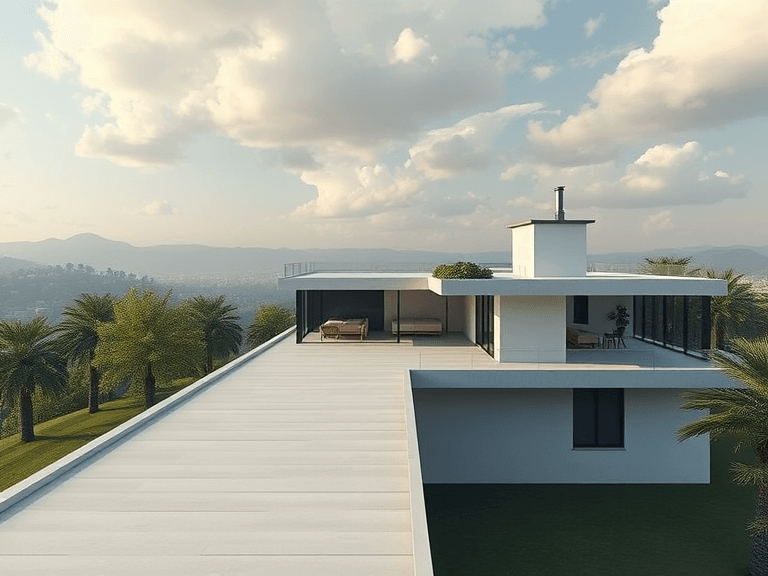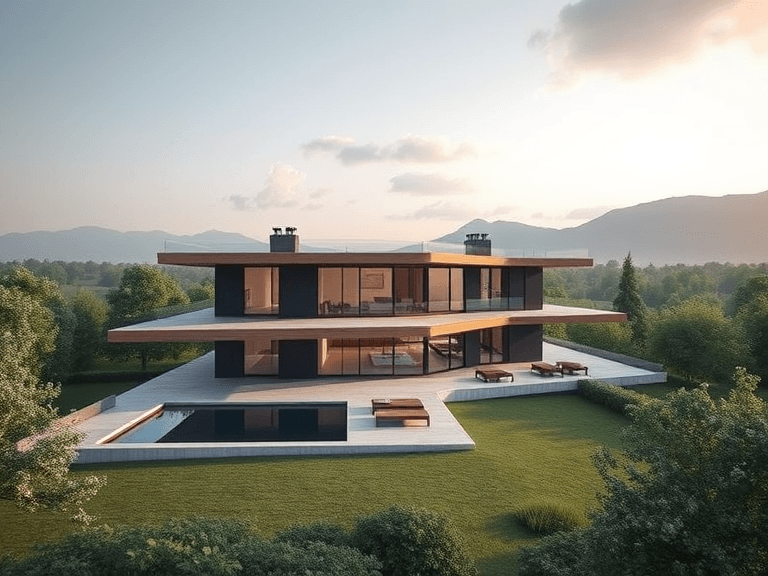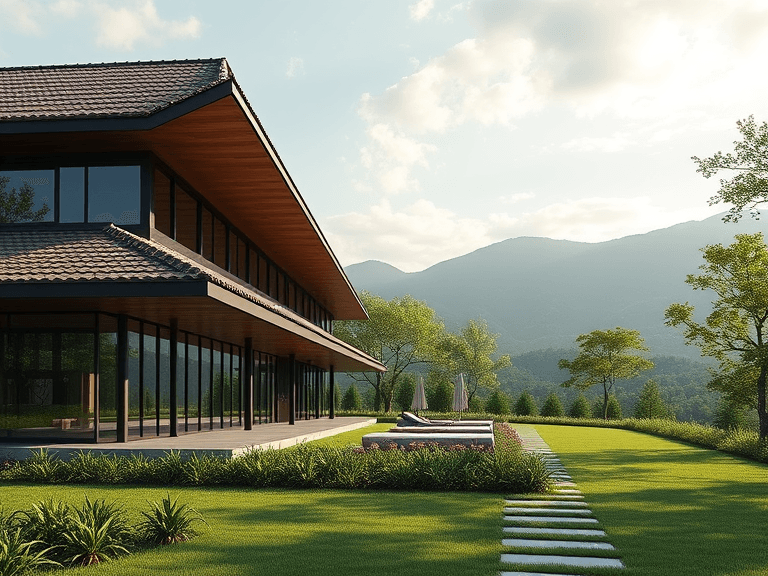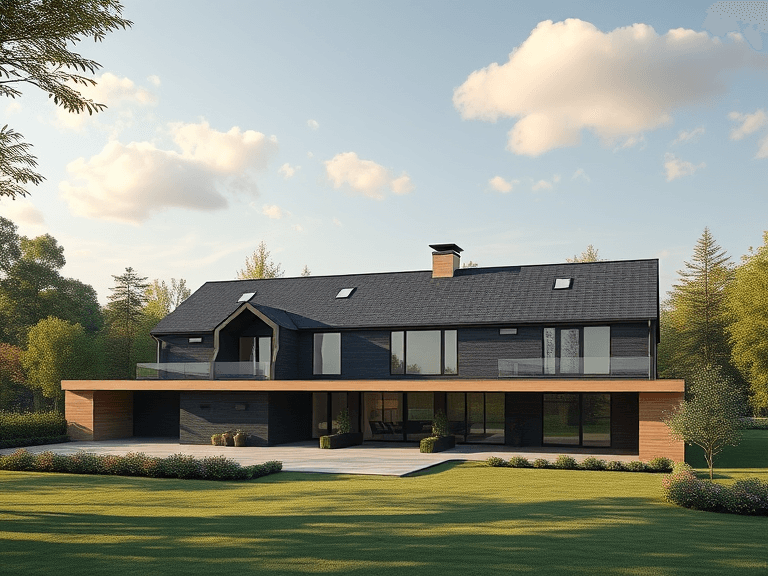
Low-slope roofing refers to roof designs where the pitch is less than 3:12, meaning that for every 12 horizontal inches, the roof rises less than 3 inches. This type of roofing is commonly found in both residential and commercial buildings due to its various functional and aesthetic advantages. Low-slope roofs allow for more efficient use of space within a structure, facilitating the installation of mechanical equipment, solar panels, and green roofing systems.
One defining characteristic of low-slope roofs is their ability to manage water runoff effectively despite their minimal pitch. Built-up roofs, modified bitumen, and single-ply membranes are commonly used materials for low-slope applications. However, traditional shingles may also be employed, albeit with specific considerations regarding their water-shedding capabilities and installation methods to ensure lasting performance.
The advantages of maintaining a low-slope shingle roof include ease of access for inspection and maintenance, which can reduce long-term repair costs. Additionally, low-slope roofs can accommodate various utilities and support additional structures, such as outdoor living spaces or HVAC units. However, they also come with disadvantages. A vital concern is the potential for water pooling, which can lead to leaks and other structural issues if not properly managed. In contrast, flat roof membranes provide a modern solution, offering seamless waterproofing and reducing maintenance needs significantly.
As homeowners and building managers weigh their options, understanding the characteristics and implications of low-slope roofing is essential. Transforming a low-slope shingle roof to a flat roof membrane may provide enhanced protection against leaks, making it a worthy consideration for those seeking long-term durability and reduced maintenance challenges.
Reasons to Convert to a Flat Roof Membrane
Homeowners and building owners often seek improvements to their property, and one significant renovation involves the conversion of a low-slope shingle roof to a flat roof membrane. This transformation can yield several advantageous outcomes that merit consideration. Firstly, aesthetic appeal is enhanced; flat roofs can create a modern and streamlined appearance, aligning with contemporary architectural trends. The uniform surface of a flat membrane allows for a seamless finish, thus elevating the overall visual impact of the structure.
Moreover, waterproofing capabilities are considerably improved with flat roof membranes. Traditional low-slope shingle roofs may face challenges related to water accumulation, particularly during heavy rainfall or snowmelt. Flat roofs, when properly installed, offer superior drainage options and materials such as TPO or PVC membranes, which are designed explicitly for flat roofing applications. This not only helps to prevent leaks and water damage but also extends the roof’s lifespan.
Another reason to consider this conversion is the ease of installation of rooftop equipment. Flat roofs provide a convenient platform for installing HVAC units, solar panels, and other equipment. This can optimize space usage and improve access for maintenance. Furthermore, utilizing the roof space effectively can lead to potential energy efficiency benefits. Flat roof membranes, especially those with reflective coatings, can reduce heat absorption, contributing to lower energy costs associated with cooling the building during hotter months.
In summary, transitioning from a low-slope shingle roof to a flat roof membrane can significantly enhance aesthetics, waterproofing, and functionality. The investment may yield not only immediate benefits but also long-term savings and added property value. These compelling reasons make flat roof membranes an attractive alternative for property owners considering a roofing upgrade.
Assessing Your Current Roof Condition
Before considering the conversion of a low-slope shingle roof to a flat roof membrane, it is essential to thoroughly assess the current condition of your roof. This evaluation helps identify any pre-existing issues or potential weaknesses that may necessitate such a conversion rather than ongoing repairs. Start with a visual inspection; look for signs of wear such as missing or curling shingles, which can indicate underlying problems.
Next, check for leaks, particularly after a heavy rain. Pay attention to any water stains on ceilings or walls, as these can signal an infiltration issue stemming from your roof. Additionally, assess the roofing surface for pooling water—a significant issue for low-slope roofs. Persistent standing water can lead to more extensive damage over time, worsening structural integrity and requiring conversion to a more effective flat roof membrane solution.
It is also wise to inspect the gutters and downspouts for debris obstructions, as clogged drainage systems can exacerbate the pooling problem, resulting in further water damage. Take note of any sagging areas, which may suggest structural weaknesses that need urgent attention. If there are visible signs of damage to the underlayment or decking, this can compromise the roof’s ability to withstand weather conditions and may be a clear indication that conversion is necessary.
During your assessment, consider inviting a professional roofing contractor to conduct a comprehensive evaluation. Their expertise can provide insights into the suitability of converting your low-slope shingle roof to a flat roof membrane, ensuring any decisions made are based on informed recommendations.
Selecting the Right Flat Roof Membrane
When transforming your low-slope shingle roof to a flat roof membrane, it is crucial to carefully evaluate the various types of membranes available. Each membrane option has its unique benefits, costs, and drawbacks, which can significantly impact the longevity and performance of your roofing system. The three most commonly used flat roof membranes are EPDM, TPO, and PVC, and understanding their characteristics is vital for making an informed decision.
EPDM (Ethylene Propylene Diene Monomer) is a synthetic rubber membrane known for its excellent durability and resistance to ultraviolet light and weathering. It is available in either black or white, with black providing a traditional aesthetic option while white is energy-efficient by reflecting sunlight. EPDM is also relatively low-cost compared to other membranes, making it a popular choice for many homeowners. However, it can be more susceptible to damage from punctures and requires careful installation to ensure long-lasting performance.
TPO (Thermoplastic Olefin) is a newer roofing membrane that has gained popularity in the past few decades. TPO membranes are typically white and offer good energy efficiency due to their reflective properties, helping to lower cooling costs in warmer climates. TPO is also known for its flexibility, which can ease installation. However, there are various quality grades in the market, so it’s crucial to select a reputable brand that meets standards to avoid potential issues down the line.
PVC (Polyvinyl Chloride) roofing membranes are recognized for their long lifespan and exceptional resistance to fire, chemicals, and moisture. PVC membranes are also reflective and can minimize heat absorption, making them suitable for energy-conscious homeowners. Although PVC tends to be more expensive than EPDM and TPO, it might be worth the investment for properties requiring robust durability and protection against extreme weather conditions.
When selecting the appropriate flat roof membrane for your conversion project, consider factors such as your local climate, budget constraints, and specific needs of the building. Each option has its strengths, and carefully weighing these elements will lead to a more satisfying long-term roofing solution.
Preparing for the Conversion Process
Converting a low-slope shingle roof to a flat roof membrane requires thorough preparation to ensure the project proceeds smoothly and efficiently. The first step in the preparation phase is to obtain the necessary permits. Each municipality has its regulations, and acquiring these permits is crucial to avoid legal issues down the line. It is advisable to consult with local building authorities to understand the specific requirements and documentation needed for your project.
Next, hiring a qualified contractor who specializes in flat roof systems is essential. A skilled contractor will not only provide you with valuable insights into the conversion of your low-slope roof but also help in selecting the right materials, ensuring compliance with local codes and regulations. It is paramount to evaluate potential contractors by checking their licenses, insurance, and references. Gathering several quotes and understanding the scope of services provided will aid in making an informed decision.
Preparing the existing roof structure is another critical phase in this conversion process. An assessment of the current condition of the roof will help identify any underlying issues, such as water damage or structural weaknesses. It is important to address these problems prior to installation to ensure the longevity of the new flat roof membrane. Depending on the condition of your roof, reinforcing the structure may also be necessary, which can add to the overall cost and timeline of the project.
Costs for converting a low-slope shingle roof to a flat roof membrane can vary significantly based on material selection, contractor fees, and roof size. Budgeting for additional costs associated with permit fees and structural reinforcements will ensure there are no surprises later in the project. Expect the conversion process to take anywhere from a few days to several weeks, depending on the complexity of the work involved.

The Conversion Process: Steps Involved
Transforming a low-slope shingle roof to a flat roof membrane requires meticulous planning and execution. The first step in this process is to remove the existing shingles. This is a crucial aspect, as it not only clears the way for the new roofing system but also allows for a thorough inspection of the underlying structure. Care should be taken to dispose of the old materials responsibly to adhere to environmental guidelines.
Following the removal of the shingles, the next step is to address any underlying structural issues. It is essential to conduct a comprehensive inspection of the roof deck for any signs of damage, rot, or deterioration. If any issues are discovered, they should be repaired before proceeding. This step is vital as it ensures that the roof is stable and capable of supporting the new flat roof membrane, thereby preventing future issues.
Once the structural integrity has been assured, the installation of insulation comes next. Proper insulation is critical when converting a low-slope shingle roof to a flat roof membrane, as it enhances energy efficiency and regulates temperature fluctuations within the building. The insulation can be added directly onto the roof deck, ensuring that it meets local building codes and is compatible with the chosen membrane system.
The final step is the application of the new flat roof membrane. Various materials are available for this purpose, including TPO, PVC, and EPDM membranes, each offering distinct advantages. The membrane is rolled out over the insulation and meticulously sealed to ensure no leaks develop. This stage is essential to establish a waterproof barrier, thereby safeguarding the building against environmental elements.
A successful conversion from a low-slope shingle roof to a flat roof membrane significantly enhances the longevity and durability of the roofing system, leading to improved structural integrity and property value.
Maintenance and Upkeep of Your New Flat Roof
Once you have successfully completed the conversion of your low-slope shingle roof to a flat roof membrane, it is essential to implement a regular maintenance routine to ensure its longevity and effectiveness. Flat roofs can accumulate debris, water, and other elements that may affect their integrity. Therefore, routinely inspecting and maintaining your flat roof is crucial.
One of the primary maintenance tasks involves cleaning the roof surface. Regularly removing leaves, branches, and other debris prevents water pooling, which can lead to leaks and structural damage. It is important to schedule cleaning sessions at least twice a year, ideally in the spring and fall. After clearing the surface, inspect for any signs of water retention or damage in the membrane itself.
Furthermore, it is vital to conduct periodic inspections for punctures or tears in the membrane. A flat roof is more susceptible to damage from foot traffic and extreme weather conditions. If you notice any defects, repair them promptly to prevent further issues. Small punctures can often be patched with specialized repair kits, while significant damage may require the expertise of a roofing professional.
Additionally, over time, membranes can degrade due to UV exposure and general wear and tear. Regularly evaluating the condition of your flat roof membrane assists in identifying areas that may need attention. Check for signs of fading, peeling, or blistering, which could point to degradation of the material.
By adhering to a consistent maintenance routine, you can significantly extend the lifespan of your flat roof membrane. Prioritizing these maintenance tasks ensures that your roofing system remains functional and retains its aesthetic appeal for years to come. Ultimately, being proactive about upkeep contributes to the overall performance, safety, and durability of your newly converted roof.
Cost Considerations: Budgeting for Your Conversion
When undertaking the conversion of a low-slope shingle roof to a flat roof membrane, it is essential to have a comprehensive understanding of the associated costs. This transformation can vary significantly based on materials, labor, and unforeseen expenses that may arise throughout the project. By evaluating these elements, homeowners can create a realistic budget to manage the conversion effectively.
The initial step in determining costs involves selecting the right materials for the flat roof membrane. Various options are available, including EPDM (ethylene propylene diene terpolymer), TPO (thermoplastic polyolefin), and PVC (polyvinyl chloride). Each material carries distinct pricing structures and longevity factors, typically ranging from $5 to $10 per square foot. Besides these, additional components such as insulation, adhesives, and underlayment should be factored into the total material costs.
Labor expenses also play a crucial role in budgeting for the conversion of a low-slope shingle roof to a flat roof membrane. Labor rates can vary based on location, contractor experience, and project complexity. Homeowners should expect to allocate approximately 30% to 50% of the overall budget to labor. It is advisable to obtain multiple quotes to ensure competitive pricing and quality of work. Additionally, homeowners should be wary of potential hidden costs, such as the need for structural reinforcements or disposal fees for the existing shingles, which can further influence the overall expenditure.
To manage costs effectively, creating a dedicated budget is paramount. Prioritize essential elements, shop for materials on sale, and consider timing the project for favorable weather conditions, which may better align with contractor availability and pricing. By maintaining a clear focus on these factors, homeowners can successfully navigate their budget while converting their low-slope shingle roof to a flat roof membrane.
Case Studies and Success Stories
Through the lens of real-life experiences, several homeowners and businesses have successfully transitioned from low-slope shingle roofs to flat roof membranes, showcasing the effectiveness and advantages of this transformation. These case studies serve to inspire and inform others considering a similar route. One notable example involved a commercial building in an urban environment plagued by water pooling and leaks. The property owner opted for a flat roof membrane to address these issues and improve drainage. After extensive planning and consultation with roofing professionals, the conversion was completed, resulting in enhanced waterproofing capabilities and a significant reduction in maintenance costs.
Another case involved a residential property in a suburban setting where a family faced frequent roof repairs due to the deteriorating condition of their low-slope shingle roof. The homeowners decided to convert their roof to a flat roof membrane after researching the long-term benefits, which included improved insulation and energy efficiency. The project required the installation of a high-quality membrane, alongside adequate insulation layers. Post-conversion, the family reported a noticeable drop in their heating and cooling bills, highlighting the energy savings achieved through this strategic roofing upgrade.
In the third case, a non-profit institution sought to modernize its building’s infrastructure and reduce overhead costs. By converting their low-slope shingle roof to a flat roof membrane, they not only enhanced the aesthetic appeal of the building but also reaped the benefits of increased durability and longevity of the roofing system. The seamless finish of the flat roof membrane contributed to the improved energy performance of the building, allowing the organization to allocate more funds toward its core mission rather than into continual roof repairs.
These success stories underscore the multifaceted benefits of investing in a flat roof membrane, demonstrating that the conversion of a low-slope shingle roof can lead to significant improvements in both functionality and efficiency.


